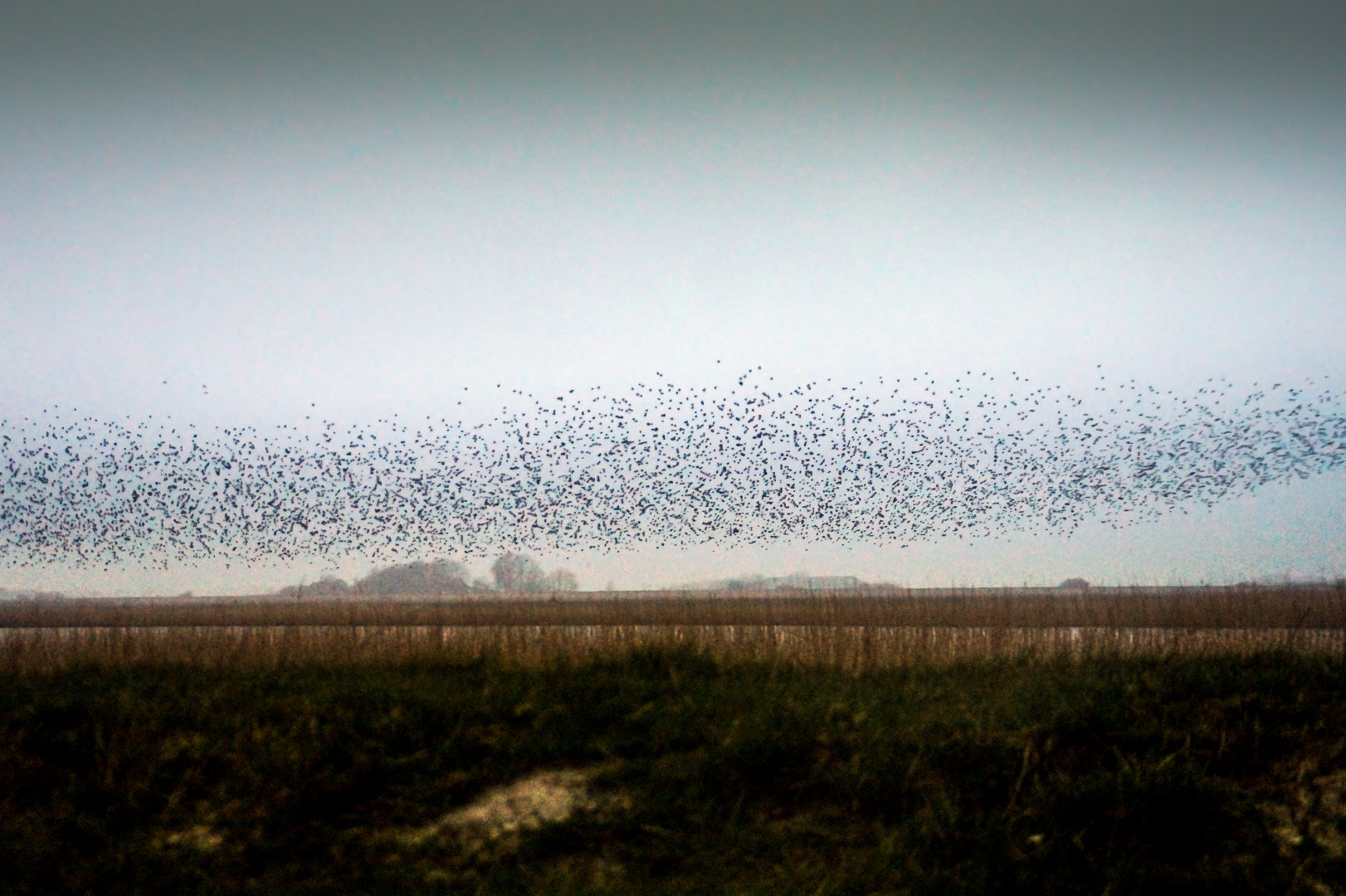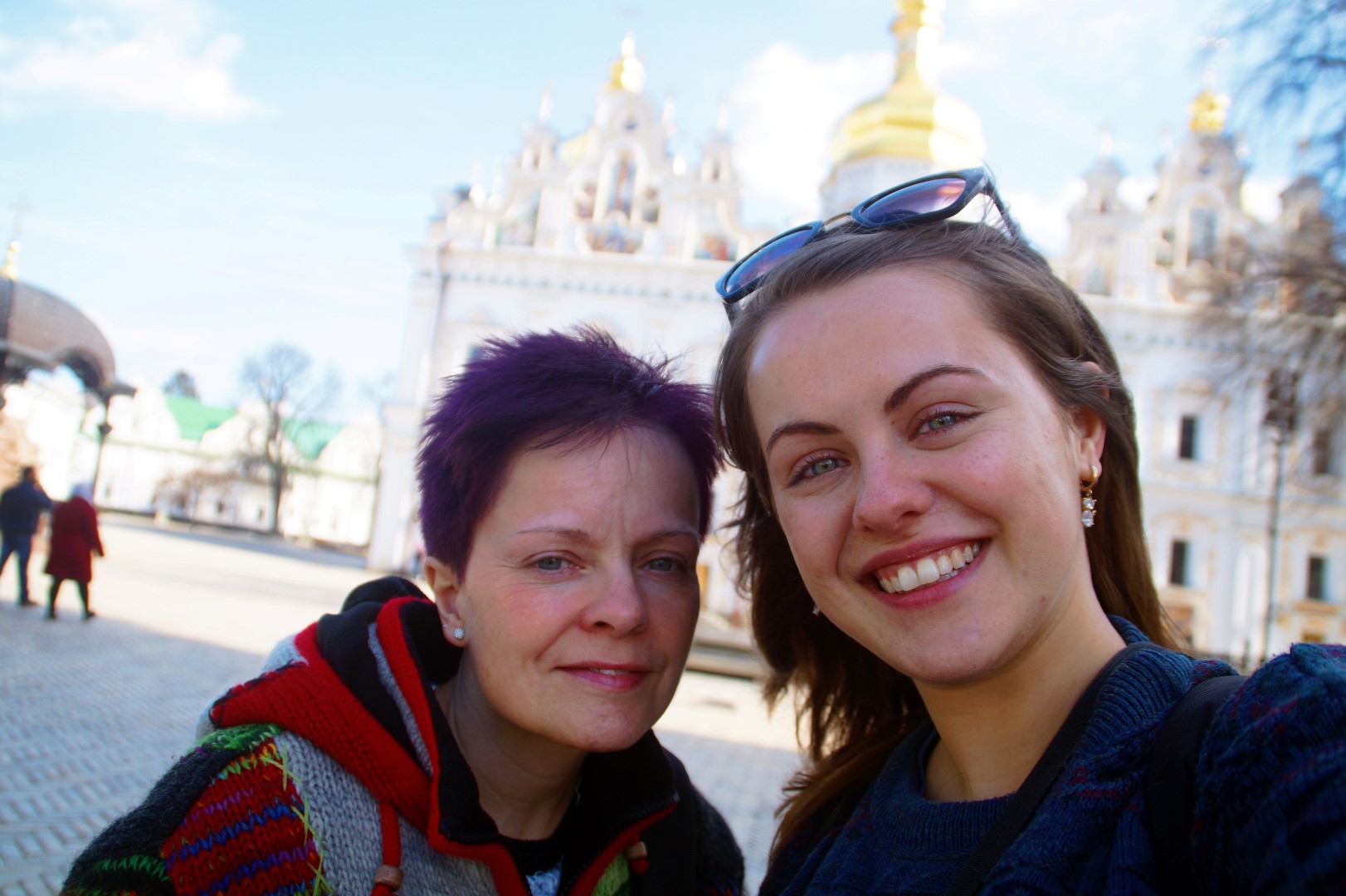Every year in spring and autumn, thousands of migrational starlings dance across the skies over southern Jutland and northern Schleswig-Holstein, creating a most magnificent natural phenomenon. During sunset, flocks of starlings can be seen creating impressive formations on the sky, sometimes blocking the setting sun.
Black Sun, or “Sort Sol” as it’s called in Danish, occurs when the starlings pass through the area on their migration route between their winter grounds in southern Europe and summer breeding grounds in northern Scandinavia. They make a stop in the marshlands of the Wadden Sea National Park to rest and find food before continuing on their journey.
The phenomenon is a late-night ritual where the birds gather in large flocks just before landing on the marshlands to roost for the night. They move together across the area searching for the perfect spot, while flying in synchronized patterns to protect themselves from predators.

For Christmas 2017, I gave my parents and grandmother (and myself) the gift of a Sort Sol tour, and we decided to do it the day before I left for the Faroe Islands.
The tour was set to start in Ribe, and we decided to go there early so we could spend some time in the town that we all adore. Ribe is the oldest existent town in Denmark, established as a small country village in the early 8th century AD during the Late Germanic Iron Age. In the early Medieval period, the village flourished and became an important trading center connecting Scandinavia with Western Europe. In 1150, the cathedral was built atop an earlier church from the 9th century. This cathedral, which is one of the oldest in Denmark, still stands today, but unfortunately, the majority of the old Medieval buildings burned down in a fire in 1580, although many of the buildings built afterwards are still preserved to this date.
Today, Ribe is home to over 8,000 people, and is one of the most popular places in Denmark for tourism. People come to experience the charming old town and – of course – the Sort Sol phenomenon.





At 4.30 PM, we and many other excited tourgoers were picked up by our guide and bus driver, and we set off into the marshlands. The drive was long, about an hour, but it went fast as our guide gave us many interesting facts about the starlings and the Wadden Sea National Park that we were about to enter.
Unfortunately, the bright blue sky that we’d had in Ribe had been replaced by thick mist, making me doubtful that we would even get to experience Sort Sol after all.
We made our first stop in Tøndermarsken, the largest marshland in Denmark at 2,500 ha. There, we saw thousands of barnacle geese that also migrate to the area on their way between the Netherlands and the Arctic.
We stayed there for a while to see if the starlings would arrive, but when they didn’t, our guide decided that we should drive across the border to Germany.

Still sceptical, we got out of the bus somewhere in the north of Schleswig-Holstein and waited with hundreds of other people for the phenomenon to happen. There was a line of over one km with people, which made me a bit more hopeful – because surely, so many tours couldn’t have got it wrong?
And sure enough, the starlings did eventually arrive. It was a fantastic sight. They danced across the sky performing all sorts of incredible formations, and I just stared at them in awe. Three different times they came to us to perform their ritual – obviously they were a little conflicted about where to land for the night – but in the end, they decided to land further away from us. I wonder if it had anything to do with their many spectators.




Despite the sun not showing up during the phenomenon, it was an incredible experience. It was something I’d dreamt of seeing my entire life, and it really did live up to my expectations. Explaining just how amazing it is to see starlings perform such formations is difficult – I think you should just come to Denmark or North Germany to see it for yourself!
How to experience Sort Sol
When? = The phenomenon can be seen during the autumn from August until the end of October, and in spring from mid March to mid April.
Where? = You can see the phenomenon in the Wadden Sea National Park in southern Jutland, Denmark, or northern Schlewig-Holstein, Germany.
How? = You can try to drive around yourself to spot the starlings, but it’s definitely easier going on a tour where the guides stay in contact with each other so they can make sure that all the tours get to see it. Taking a tour is also great if you want to learn more about the starlings and other wildlife in the area. We went with Sort Safari, which I can definitely recommend.




2 COMMENTS
Desirée travels
6 years agoWow, Melissa, I love these photos! So, so cool! Now this phenomenon is definitely on my list over things I want to see 😀
Melissa Cherry
6 years agoThank you Desirée! I hope you get to see it someday – it’s mind-blowing! 😀